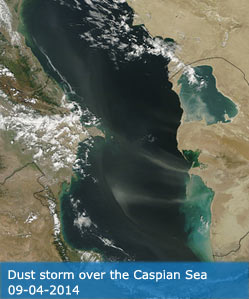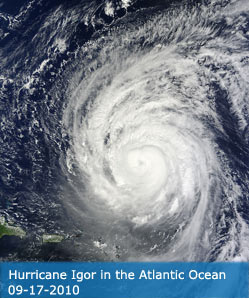Science Team
Publications
Aliabad, FA; Ghaderpour, E (2025). Modeling soil heat flux from MODIS products for arid regions. ECOLOGICAL INFORMATICS, 86, 103005.
Abstract
Soil heat flux (SHF) is the rate of heat transfer between the Earth's surface and the underlying soil which affects important processes, such as evapotranspiration and climate changes. Accurate estimation of SHF is therefore very important. This research models SHF images with hourly sequence in Yazd-Ardakan plain, an arid region in central part of Iran, employing moderate resolution imaging spectroradiometer (MODIS) products from 2014 to 2021, such as land surface temperature, emissivity, albedo and normalized difference vegetation index. Two methods are utilized to estimate SHF hourly. The first method (M1) is based on thermal inertia, calculated through the albedo image and the temperature of the Earth's surface. In M1, SHF is estimated using the range of land surface temperature, thermal inertia and applying the harmonic relationship. The second method (M2) is based on modeling the daily SHF cycle using four MODIS-SHF images, calculated by the energy balance equation. In M2, the average and range of SHF in each day are calculated using four available images of SHF for each day, considering day length, time of sunrise, sunset and local noon. The results show that the root mean square error in M1 is 12.48 W/m2 while in M2 is 7.61 W/m2. The mean absolute deviation for M1 and M2 are estimated as 15.61 W/m2 and 5.42 W/m2, respectively. Cross-validation results demonstrates that M2 has higher accuracy in modeling the daily cycle of SHF. The results also show that the pattern of changes in SHF during the day and night in one-year time series is completely opposite of each other. The SHF during the day has varied from 64 to 98 W/m2 and at night from 0 to 64 W/m2. Plain lands have shown the highest SHF during the day compared to other land covers throughout the year. In the summer season, residential, agriculture, sand dune, mountain, plain, and bare lands respectively have the lowest to the highest SHF. Examining the changes in SHF indifferent land covers in one-year time series at nighttime indicates that SHF is higher in mountain throughout the year and lower in residential areas.
DOI:
10.1016/j.ecoinf.2025.103005
ISSN:
1878-0512




